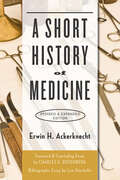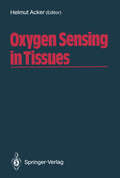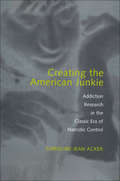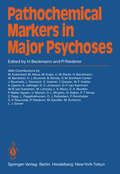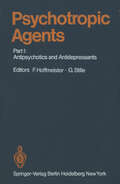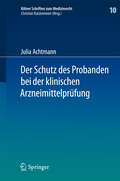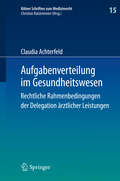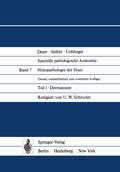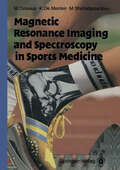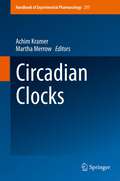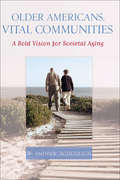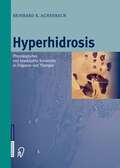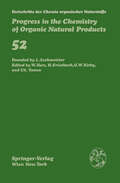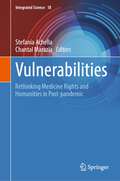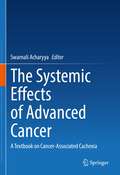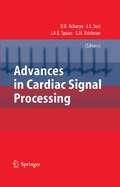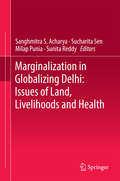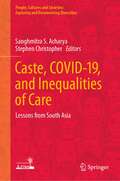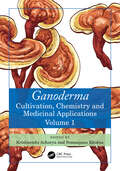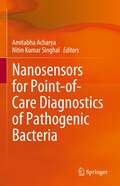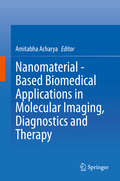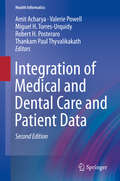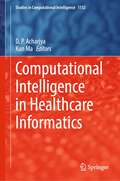- Table View
- List View
A Short History of Medicine
by Erwin H. Ackerknecht Lisa Haushofer.Erwin H. Ackerknecht;€™s A Short History of Medicine is a concise narrative, long appreciated by students in the history of medicine, medical students, historians, and medical professionals as well as all those seeking to understand the history of medicine.Covering the broad sweep of discoveries from parasitic worms to bacilli and x-rays, and highlighting physicians and scientists from Hippocrates and Galen to Pasteur, Koch, and Roentgen, Ackerknecht narrates Western and Eastern civilization;€™s work at identifying and curing disease. He follows these discoveries from the library to the bedside, hospital, and laboratory, illuminating how basic biological sciences interacted with clinical practice over time. But his story is more than one of laudable scientific and therapeutic achievement. Ackerknecht also points toward the social, ecological, economic, and political conditions that shape the incidence of disease. Improvements in health, Ackerknecht argues, depend on more than laboratory knowledge: they also require that we improve the lives of ordinary men and women by altering social conditions such as poverty and hunger.This revised and expanded edition includes a new foreword and concluding biographical essay by Charles E. Rosenberg, Ackerknecht;€™s former student and a distinguished historian of medicine. A new bibliographic essay by Lisa Haushofer explores recent scholarship in the history of medicine.
Creating the American Junkie: Addiction Research in the Classic Era of Narcotic Control
by Caroline Jean AckerHeroin was only one drug among many that worried Progressive Era anti-vice reformers, but by the mid-twentieth century, heroin addiction came to symbolize irredeemable deviance. Creating the American Junkie examines how psychiatrists and psychologists produced a construction of opiate addicts as deviants with inherently flawed personalities caught in the grip of a dependency from which few would ever escape. Their portrayal of the tough urban addict helped bolster the federal government's policy of drug prohibition and created a social context that made the life of the American heroin addict, or junkie, more, not less, precarious in the wake of Progressive Era reforms.Weaving together the accounts of addicts and researchers, Acker examines how the construction of addiction in the early twentieth century was strongly influenced by the professional concerns of psychiatrists seeking to increase their medical authority; by the disciplinary ambitions of pharmacologists to build a drug development infrastructure; and by the American Medical Association's campaign to reduce prescriptions of opiates and to absolve physicians in private practice from the necessity of treating difficult addicts as patients. In contrast, early sociological studies of heroin addicts formed a basis for criticizing the criminalization of addiction. By 1940, Acker concludes, a particular configuration of ideas about opiate addiction was firmly in place and remained essentially stable until the enormous demographic changes in drug use of the 1960s and 1970s prompted changes in the understanding of addiction—and in public policy.
Pathochemical Markers in Major Psychoses
by M. AckenheilThis volume contains the proceedings of the symposium Pathochemical Markers in Major Psychoses, held in Vienna in July 1983. The development of biological markers in psychiatric diseases, par ticularly in the field of neurochemistry, has made substantial progress during recent years although the multiple mechanisms of mental illness are still not fully understood. The greatest contribution has come through the development of new therapeutic agents that not only pro vide invaluable help for psychiatric patients but also serve as chemical tools for the investigation of the biological mechanisms underlying the disease. The catecholamine and serotonin hypotheses for major psy choses have been of particular heuristic value and have stimulated im portant research. However, the scope of our scientific endeavours has to be broadened to include other putative biological causes of psychoses, e. g. , pathomorphological changes, aberrations in the metabolism of other amino acids and oflipids, or the formation of endogenous toxins. This book presents new selected studies of the pathochemical bases of schizophrenia and affective psychoses. Although several topics were inevitably not included in this symposium, we nevertheless hope that it represents an integration of basic pathomorphological research with current clinical findings in the area of pathochemical markers in psy chiatry. October 1984 HELMUT BECKMANN PETER RIEDERER Contents Neuromorphological Background of Pathochemical Studies in Major Psychoses K. JELLINGER (With I Figure) . . . . . . . . . . of Psychopathological Classification The Significance in Interpreting Biochemical Findings E. GABRIEL . . . . . . . . . . . . . . . . .
Psychotropic Agents: Part I: Antipsychotics and Antidepressants (Handbook of Experimental Pharmacology #55 / 1)
by M. AckenheilThe volumes on "psychotropic substances" in the Handbook of Experimental Phar macology series clearly show that the classical concept of this discipline has become too narrow in recent years. For instance, what substances are psychotropic is determined not by the criteria of the animal trial, i.e. by experimental pharmacology, but by their action on the psy che, which in the final analysis is only accessible to us in man. Psychotropic substances force experimental pharmacology (and thus also this Handbook) outside its tradition allimits, which have essentially depended on animal studies. The antipsychotics and antidepressants were not discovered in animal ex periments, but by chance (or more precisely, by clinical empiricism). Experienced psy chiatrists trained in the observation of patients recognised the efficacy of drugs, the beneficial effect of which nobody had dreamed of before: DELAY and DENICKER in the case of chlorpormazine, KLINE in the case of the monoamine oxidase inhibitors and KUHN in the case of imipramine. It was only after these discoveries that the pharma cologists developed experimental models of the psychoses in animal experiments. However, even today we still do not know with certainty which of the effects shown in animals is relevant for the clinical effect despite the vast abundance of individual investigations. For many years, this uncertainty led to the testing of antipsychotics (e.g. of the neuroleptic type) in models which actually produced the undesired effects.
Der Schutz des Probanden bei der klinischen Arzneimittelprüfung: unter besonderer Berücksichtigung der Haftung der Beteiligten und der Probandenversicherung (Kölner Schriften zum Medizinrecht #10)
by Julia AchtmannZwingende Voraussetzung der Zulassung eines neuen Arzneimittels ist dessen vorherige klinische Prüfung. Diese ist jedoch – trotz der hohen Sorgfaltsanforderungen - mit gesundheitlichen Risiken für die Studienteilnehmer verbunden. Zur Kompensation prüfungsbedingter Gesundheitsschäden sieht die (deutsche) Rechtsordnung eine Kombination von Ersatzansprüchen gegen die Beteiligten der klinischen Arzneimittelprüfung und die gem. § 40 Abs. 1 S. 3 Nr. 8, Abs. 3 AMG abzuschließende Probandenversicherung vor. Dieses kombinatorische System als Teilaspekt des Probandenschutzes wird im Rahmen der vorliegenden Arbeit einer umfassenden Untersuchung unterzogen. Dabei werden Voraussetzungen, Umfang und Durchsetzbarkeit möglicher Entschädigungsansprüche des Probanden analysiert. Die Verfasserin gelangt zu dem Ergebnis, dass das derzeitige Schadensausgleichsmodell in weiten Teilen unangemessen ist und stellt Reformüberlegungen an.
Aufgabenverteilung im Gesundheitswesen: Rechtliche Rahmenbedingungen der Delegation ärztlicher Leistungen (Kölner Schriften zum Medizinrecht #15)
by Claudia AchterfeldDie Abhandlung zeigt Möglichkeiten und Wege auf, wie die qualitativ hochwertige Gesundheitsversorgung in Deutschland auch in Zeiten des demographischen Wandels und eines zunehmenden Ärztemangels gesichert werden kann. Diskutiert wird die Erbringung bislang Ärzten vorbehaltener Leistungen durch nicht-ärztliches Personal im Wege der Delegation oder Substitution. Die rechtlichen Rahmenbedingungen, Möglichkeiten und Grenzen werden aufgezeigt und Vorschläge für die künftige Aufgabenverteilung im Gesundheitswesen unterbreitet.
Histopathologie der Haut: Teil 1 Dermatosen (Spezielle pathologische Anatomie #7 / 1)
by G. Achten E. H. Beutner T. P. Chorzelski E. Frenk E. Grosshans S. Jablonska O. Male T. Nasemann U. W. Schnyder F. Vakilzadeh J. Wanet U. ZaunMagnetic Resonance Imaging and Spectroscopy in Sports Medicine
by E. Achten T. Buisseret P. P. Casteleyn R. Luypaert D. De Meirleir M. Osteaux C. Pierre-Jerome M. Shahabpour T. Stadnik Y. Taeymans P. Vaes M. Van Cauteren K. Vandenborne P. Van Roy E. VerhaeveThroughout the twentieth century, interest in sport has evidenced a major increase worldwide and a new field of sports medicine has emerged. Sport spectators hip has been stimulated in part by the increased ease of international travel and the intro duction of new means of communication. Interest in professional sports and in such events as the World Cup and the Olympic Garnes has never been higher and the general popularity of sports has drawn increasingly greater numbers of young people to sports participation. Interest in sports participation has been strength ened both by the provision of numerous sports facilities to populations throughout the world and the accumulating information base that relates regular participation in programs of sport and exercise to health enhancement. Along with in creases in interest and participation has corne a need for a better understanding of the physiological changes accompanying muscular activity and of the trauma that can result from both competitive sport and recreational exercise.
Circadian Clocks (Handbook of Experimental Pharmacology #217)
by Achim Kramer and Martha MerrowThis book provides the reader with a contemporary and comprehensive overview about the molecular, cellular and system-wide principles of circadian clock regulation. Emphasis is placed on the importance of circadian clocks for the timing of therapeutic interventions.
Older Americans, Vital Communities: A Bold Vision for Societal Aging
by W. Andrew AchenbaumThis thought-provoking work grapples with the vast range of issues associated with the aging population and challenges people of all ages to think more boldly and more creatively about the relationship between older Americans and their communities. W. Andrew Achenbaum begins by exploring the demographics of our aging society and its effect on employment and markets, education, health care, religion, and political action. Drawing on history, literature, and philosophy, Achenbaum focuses on the way health care and increases in life expectancy have transformed late life from a phase characterized by illness, frailty, and debility to one of vitality, productivity, and spirituality. He shows how this transformation of aging is beginning to be felt in programs and policies for aging persons, as communities focus more effort on lifelong learning and extensive civic engagement. Concerned that his own undergraduate students are too focused on the immediate future, Achenbaum encourages young people to consider their place in life's social and chronological trajectory. He calls on baby boomers to create institutional structures that promote productive, vital growth for the common good, and he invites people of all ages to think more boldly about what they will do with the long lives ahead of them.
Fortschritte der Chemie organischer Naturstoffe / Progress in the Chemistry of Organic Natural Products (Fortschritte der Chemie organischer Naturstoffe Progress in the Chemistry of Organic Natural Products #52)
by H. Achenbach P. Bhattacharyya D. P. Chakraborty T. Goto L. Merlini G. Nasini U. WeissThe volumes of this classic series, now referred to simply as "Zechmeister" after its founder, L. Zechmeister, have appeared under the Springer imprint ever since the series' inauguration in 1938. The volumes contain contributions on various topics related to the origin, distribution, chemistry, synthesis, biochemistry, function or use of various classes of naturally occurring substances ranging from small molecules to biopolymers. Each contribution is written by a recognized authority in his field and provides a comprehensive and up-to-date review of the topic in question. Addressed to biologists, technologists and chemists alike, the series can be used by the expert as a source of information and literature citations and by the non-expert as a means of orientation in a rapidly developing discipline.
Vulnerabilities: Rethinking Medicine Rights and Humanities in Post-pandemic (Integrated Science #18)
by Stefania Achella Chantal MaraziaDrawing from a wide array of disciplinary perspectives and geographical contexts, this volume offers new insights for critically engaging with the problem of vulnerability. The essays here contained take the move from the COVID-19 pandemic, in order to explore the inherent vulnerability of individuals, but also of social, economic and political systems, and probe the descriptive and prescriptive import of the concept.Each chapter provides a self-contained perspective on vulnerability, as well as a specific methodological framework for questioning its meaning. Taken together, the chapters combine into a multi-disciplinary toolkit for approaching the various forms and structures of vulnerability, with a special attention to the intersectional factors shaping the individual experience of it: from gender to age, from disability to mental illness, from hospitalisation to incarceration. The book explores the theoretical richness and complexity of the concept and proposes new analytical approaches to it, before illustrating its multifariousness through empirically grounded case studies. The closing section engages with “the future of vulnerability”, as a hermeneutic, epistemological, and critical-normative perspective to be deployed beyond the domain of global crises and emergencies.The volume is primarily intended as a reference for scholars in the human, social and health sciences. The accessible structure and plain language of the chapters make it also a valuable didactic resource for graduate courses in philosophy, the social sciences and public health.
The Systemic Effects of Advanced Cancer: A Textbook on Cancer-Associated Cachexia
by Swarnali AcharyyaThis textbook discusses the systemic consequences of cancer, covering a range of topics from tumor-promoting systemic effects to the development of cachexia, as summarized in the introductory chapter 1. Part I of this textbook focuses on tumor-promoting systemic effects and begins with a chapter on how tumor-derived extracellular vesicles and particles lay the foundation for future metastases (Chapter 2). Chapter 3 discusses how metastatic cells that have colonized the bone impact the local bone microenvironment, neighboring muscles, and host physiology. Chapter 4 summarizes the available strategies for targeting metastatic cancer and emphasizes the need to incorporate a systemic view of the disease. Following this overview of the systemic effects of cancer progression, Part II of the textbook discusses cancer-induced cachexia, a debilitating systemic effect of advanced cancer. Chapters 5-7 examine the key signaling pathways (interleukin-6/GP130, NF-kB, and muscle proteolysis) that drive the development of cancer cachexia. Chapters 8 and 9 in Part III of this textbook explore how toxicities from anti-cancer therapy are associated with the onset of cachexia in cancer patients, and provide insight into potential approaches to simultaneously target both cancer and cachexia. Chapters 10 and 11 (Part IV) conclude this textbook by outlining promising approaches for the diagnosis and treatment of cachexia as well as strategies to prevent the development of cachexia through exercise. An understanding of the systemic effects of cancer is essential for the design of effective anti-cancer and anti-cachexia treatment strategies. As such, this textbook provides key information for both students and scientists engaged in cancer research and oncology.
Advances in Cardiac Signal Processing
by U. Rajendra AcharyaThis book provides a comprehensive review of progress in the acquisition and extraction of electrocardiogram signals. The coverage is extensive, from a review of filtering techniques to measurement of heart rate variability, to aortic pressure measurement, to strategies for assessing contractile effort of the left ventricle and more. The book concludes by assessing the future of cardiac signal processing, leading to next generation research which directly impact cardiac health care.
Marginalization in Globalizing Delhi: Issues Of Land, Livelihoods And Health
by Sanghmitra S. Acharya Sucharita Sen Milap Punia Sunita ReddyThis book analyses how developmental projects in a globalizing Delhi have brought about neglect, exclusion and alienation of certain sections of population, while benefiting others. It discusses the physical, economic and social displacement of people in the city in recent times, which has deprived them of their lands, livelihoods and access to health care. In Delhi and the National Capital Region, beyond the obvious and apparent image of wide roads, flyovers, the metro rail network, high-rises and glittering malls, globalization has brought about skewed and uneven development. A growing middle class and a significant group of an extremely rich section of population steer the ways in which development strategies are planned and implemented. Furthermore, with government control reducing as is inevitable and consistent with a neoliberal policy framework, private players have entered not only the consumer goods sector, but also basic goods and services such as agriculture, health and education. This book explores the effects of such processes, with a specific focus on equity, on the marginalized sections of population in a globalizing megacity. It addresses the themes of land, livelihoods and health as overarching, drawing upon their interlinkages. It traces the changes in the growth of the city in context of these themes and draws inferences from their interconnectedness to examine the current situation of development in Delhi.
Caste, COVID-19, and Inequalities of Care: Lessons from South Asia (People, Cultures and Societies: Exploring and Documenting Diversities)
by Sanghmitra S. Acharya Stephen ChristopherThis book explores how social discrimination in South Asia contributes to health disparities and impedes well-being. Specifically, it addresses how marginalization shapes health outcomes, both under normal circumstances and specifically during the COVID-19 pandemic. Coming from diverse backgrounds and representing different academic disciplines, the authors have contributed a range of chapters drawing from quantitative and ethnographic material across South Asia. Chapters address reservation politics, tribal lifeways, Dalit exclusions from governmental institutions, Muslim ghettoization, gendered domestic violence, social determinants of health among migrant workers, and the pandemic fallout across South Asian society, among other subjects. Scholars draw on decades of experience and firsthand ethnographic fieldwork among affected communities. The chapters provide an innovative analysis, often in real time, of the human toll of casteism, classism, patriarchy, and religious intolerance—many set against the spectre of COVID-19. Many authors not only present social critiques but also offer specific policy recommendations. The book is of great interest to social scientists, public health practitioners, and policy advocates interested in addressing systemic inequalities and ensuring that future pandemics are not disproportionately felt by the most vulnerable.
Ganoderma: Cultivation, Chemistry and Medicinal Applications, Volume 1
by Krishnendu Acharya Somanjana KhatuaGanoderma holds significant traditional importance in various ethnic cultures around the world, particularly in China, Japan, and Korea. Many indigenous traditions have incorporated Ganoderma into medicinal practices, being considered a symbol of longevity, vitality, and good health. At present, the taxon is believed to possess various health benefits and is used to treat ailments and promote overall well-being. In this context, the first volume of the book, titled Ganoderma: Cultivation, Chemistry and Medicinal Applications, aims to comprehensively cover the taxonomy, morphological features, domestication strategies, structures of secondary metabolites, and therapeutic prospects of Ganoderma. It may serve as a definite resource for students, researchers, healthcare professionals, traditional medicine practitioners, and enthusiasts.FEATURES Provides a comprehensive classification system for Ganoderma species, highlighting their taxonomy and distinguishing characteristics Delves into the techniques and practices involved in cultivating Ganoderma, offering detailed guidance for individuals interested in growing this valuable fungus Explores the cultural and traditional significance of Ganoderma in various ethnic cultures intertwined with customs, beliefs, rituals, myths, and folklore around the world Investigates the secondary metabolites of Ganoderma, highlighting their implications Examines diverse bioactivities associated with Ganoderma, including antioxidant, hepatoprotective, antidiabetic, prebiotic, anti-inflammatory, anti-arthritis, anticancer, hypolipidemic, and cholesterol-lowering effects This book includes relevant illustrations, diagrams, and images to enhance the understanding of concepts associated with Ganoderma.
Nanosensors for Point-of-Care Diagnostics of Pathogenic Bacteria
by Amitabha Acharya Nitin Kumar SinghalThis book comprehensively reviews various nanodiagnostic approaches for the detection of bacterial pathogens. The initial chapter of the book discusses receptors present on bacterial cell surfaces that can be targeted for diagnostic applications. The book then presents different fluorescent nanoparticle systems that are used for bacterial detection. Further, it covers surface plasmon resonance (SPR), ELISA, and QCM-based nanosensors to detect pathogenic bacteria. It examines different nanosensors used for the microfluidic-based detection of bacterial pathogens, including microfluidic paper-based analytical devices (μPADs), lateral flow devices, and miniaturized PCR devices. The book also covers the current electrochemical, voltammetric, and amperometric nanosensors-based microorganism recognition approaches. Lastly, the book summarizes the current challenges and the futuristic application of nanosensors to detect bacterial pathogens. This book is an invaluable resource for all medical laboratories and clinical institutions dealing with infectious diseases.
Nanomaterial - Based Biomedical Applications in Molecular Imaging, Diagnostics and Therapy
by Amitabha AcharyaThis book comprehensively reviews the recent advances in nanomaterial-based molecular imaging, diagnostics, and personalized therapy. It discusses the novel biocompatible fluorescent nanomaterials, their synthesis, and modern state of art characterization, as well as the various strategies for immobilization of biomacromolecules on the nanomaterial surface and approaches for increasing their stability. In addition, the book describes the synthesis of lectin nanoconjugates using different types of biocompatible raw materials and their systematic characterization. Lastly, it presents our current understanding of the biomolecular carona, which affects nanoparticle-based targeted drug delivery, and examines the conceptual approaches to improve the in-vivo efficacy of targeted drug delivery.
Integration of Medical and Dental Care and Patient Data (Health Informatics #3)
by Amit Acharya Valerie Powell Miguel H. Torres-Urquidy Robert H. Posteraro Thankam Paul ThyvalikakathThis largely revised second edition comprehensively reviews the need and rationale for the integration of medical and dental patient data. The reader will find extensive guidance on issues involved with care and data integration, and how to achieve an integrated model of healthcare. The book discusses how the use of state-of-the-art, fully integrated (dental-medical), electronic health records can improve clinical, financial as well as societal outcomes. In the book you will also find different aspects that play a role in integration including existing clinical software implementations (and their paths for integration), clinical touch points, and how current and future developments will facilitate the integration process in a more efficient way. This second edition of Integration of Medical and Dental Care and Patient Data details the available methods and technologies for successfully integrating patient medical and dental data. It is, therefore, an important and timely update for informaticians and a broad range of both dental and medical professionals and other health professionals (dental assistants, hygienists, nurses) as well as clinical students entering the professional environment.
Computational Intelligence in Healthcare Informatics (Studies in Computational Intelligence #1132)
by D. P. Acharjya Kun MaThe book presents advancements in computational intelligence in perception with healthcare applications. Besides, the concepts, theory, and applications in various domains of healthcare systems including decision making in healthcare management, disease diagnosis, and electronic health records will be presented in a lucid manner. To achieve these objectives, both theoretical advances and its applications to healthcare problems will be stressed upon. This has been done to make the edited book more flexible and to stimulate further research interest in topics. The book is divided into four sections such as theoretical foundation of computational intelligence techniques, computational intelligence in analyzing health data, computational intelligence in electronic health record (EHR), and computational intelligence in ethical issues in health care.
Ay's Neuroanatomy of C. Elegans for Computation (Routledge Revivals)
by Theodore B. Achacoso William S. YamamotoFirst published in 1992, AY's Neuroanatomy of C. elegans for Computation provides the neural circuitry database of the nematode Caenorhabditis elegans, both in printed form and in ASCII files on 5.25-inch diskettes (for use on IBM® and compatible personal computers, Macintosh® computers, and higher level machines). Tables of connections among neuron classes, synapses among individual neurons, gap junctions among neurons, worm cells and their embryonic origin, and synthetically derived neuromuscular connections are presented together with the references from which the data were compiled and edited. Sample data files and source codes of FORTRAN and BASIC programs are provided to illustrate the use of mathematical tools for any researcher or student interested in examining a natural neural network and discovering what makes it tick.
Ay's Neuroanatomy of C. Elegans for Computation (Routledge Revivals)
by Theodore B. Achacoso William S. YamamotoFirst published in 1992, AY's Neuroanatomy of C. elegans for Computation provides the neural circuitry database of the nematode Caenorhabditis elegans, both in printed form and in ASCII files on 5.25-inch diskettes (for use on IBM® and compatible personal computers, Macintosh® computers, and higher level machines). Tables of connections among neuron classes, synapses among individual neurons, gap junctions among neurons, worm cells and their embryonic origin, and synthetically derived neuromuscular connections are presented together with the references from which the data were compiled and edited. Sample data files and source codes of FORTRAN and BASIC programs are provided to illustrate the use of mathematical tools for any researcher or student interested in examining a natural neural network and discovering what makes it tick.
